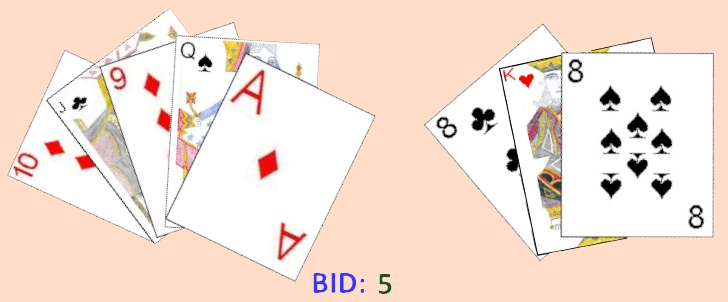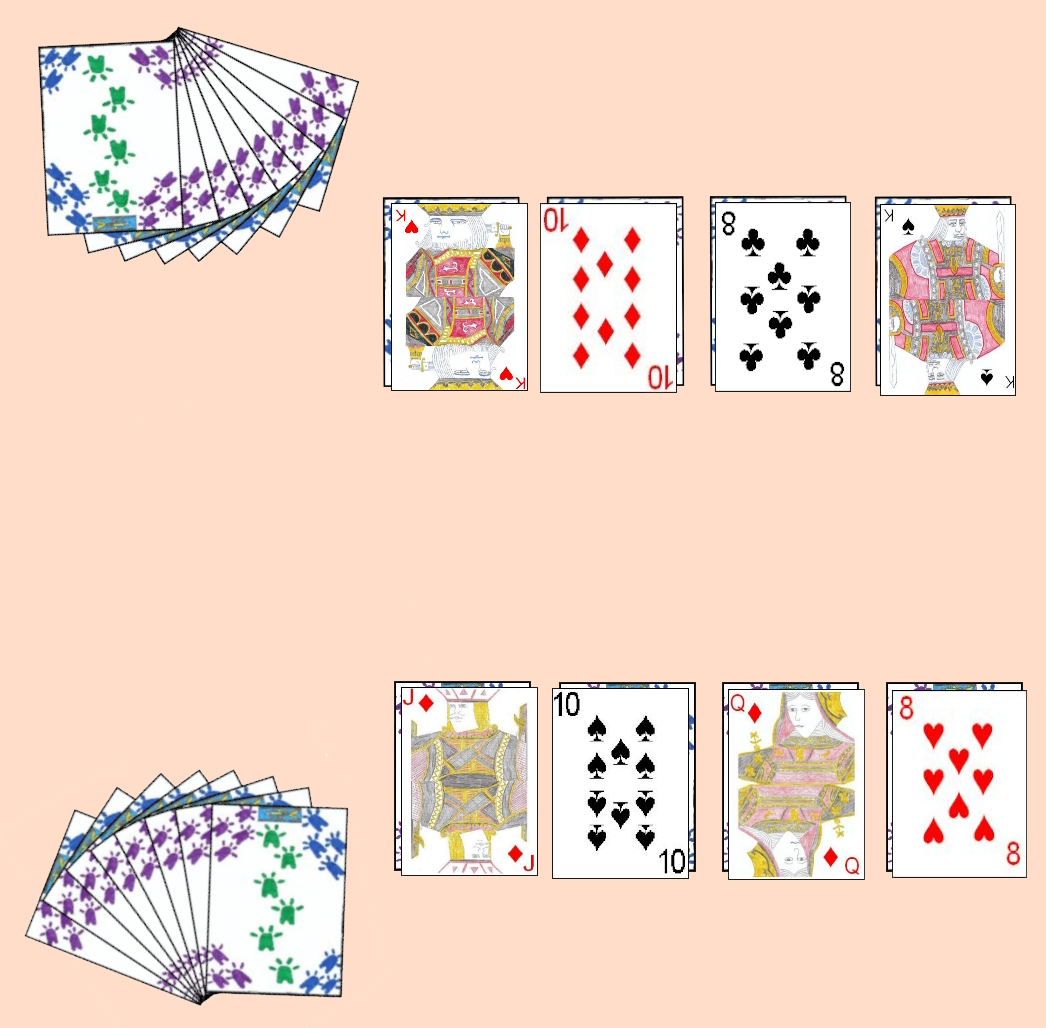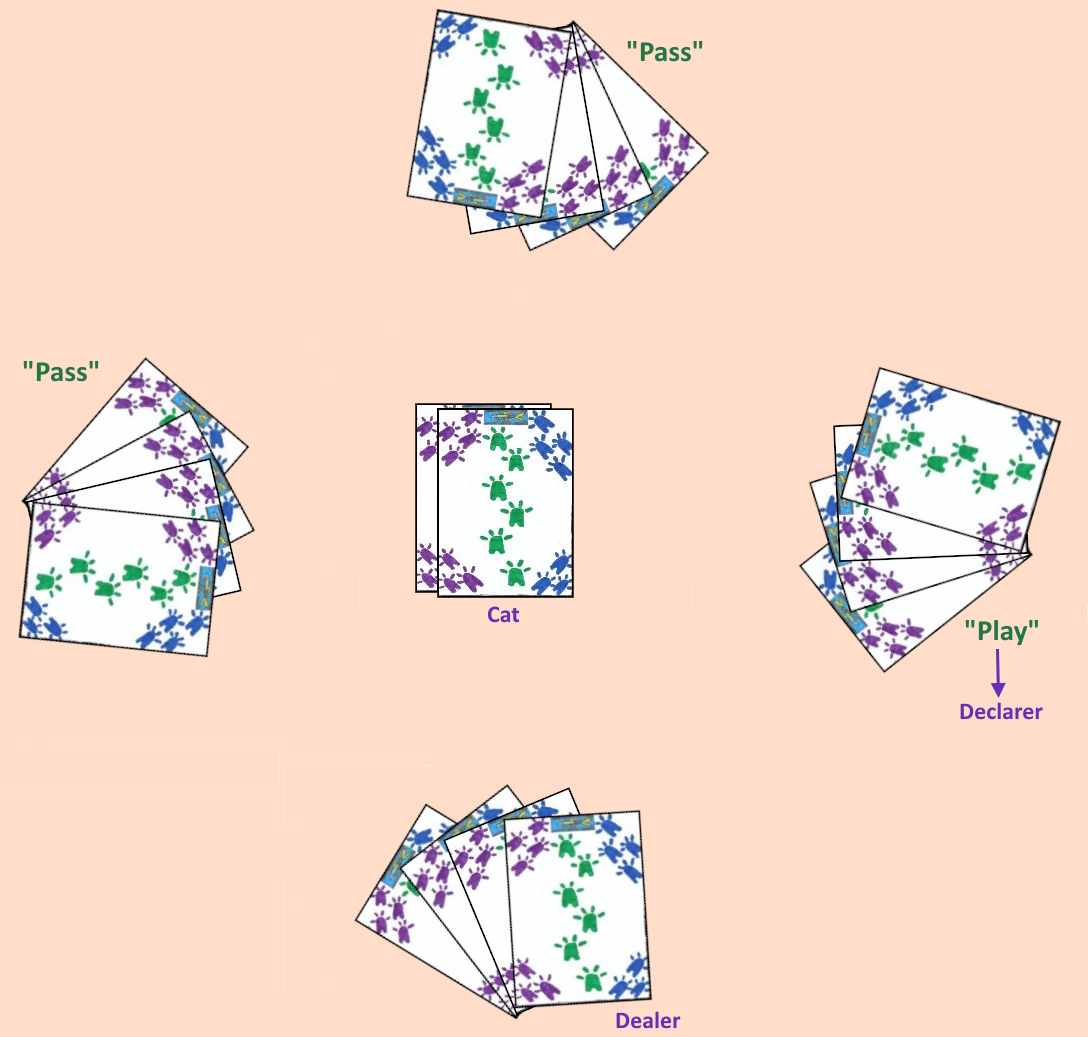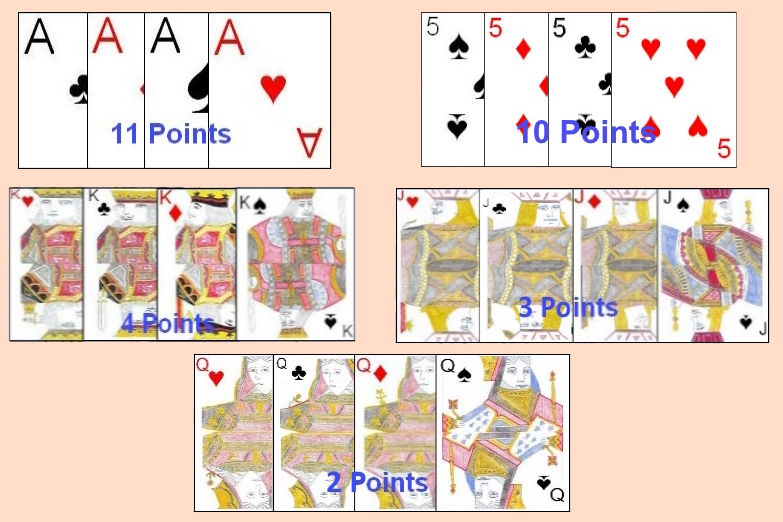| Card | Card Point Value |
|---|---|
| Ace | 11 Each |
| King | 4 Each |
| Queen | 3 Each |
| Jack | 2 Each |
| Ten | 10 Each |
| 9, 8, 7 | 0 |

How to Play Sjavs |
 Once the partners are determined and the first dealer set, this player should then thoroughly shuffle the deck and offer it to the player at his immediate right to cut. This player can then either opt to cut, or simply rap the top of the deck with his knuckles indicating he prefers not to cut. After this, the dealer then begins dealing the cards around the table in a clockwise direction, starting with the player at his immediate left. If the deck was cut, the dealer deals in packets of four cards to each player around the table, continuing until each player has a total of eight cards. If the deck was not cut, the dealer deals each player a full packet of eight cards.
Once the partners are determined and the first dealer set, this player should then thoroughly shuffle the deck and offer it to the player at his immediate right to cut. This player can then either opt to cut, or simply rap the top of the deck with his knuckles indicating he prefers not to cut. After this, the dealer then begins dealing the cards around the table in a clockwise direction, starting with the player at his immediate left. If the deck was cut, the dealer deals in packets of four cards to each player around the table, continuing until each player has a total of eight cards. If the deck was not cut, the dealer deals each player a full packet of eight cards.
|
 |
 Two Player Sjavs: In addition to the three player variant, there is also a two player version of the
Faroese game which is sometimes played. This game is also played similarly to the standard four player variant, with just a few differences.
Two Player Sjavs: In addition to the three player variant, there is also a two player version of the
Faroese game which is sometimes played. This game is also played similarly to the standard four player variant, with just a few differences.
| Card | Card Point Value |
|---|---|
| Ace | 11 Each |
| King | 4 Each |
| Queen | 3 Each |
| Jack | 2 Each |
| Five | 10 Each |
 Four Hand Klørsjavs: A Danish variant of Klørsjavs is also played by four participants. It is played similarly to the three player variant, however it has several differences:
Four Hand Klørsjavs: A Danish variant of Klørsjavs is also played by four participants. It is played similarly to the three player variant, however it has several differences:
 |
|